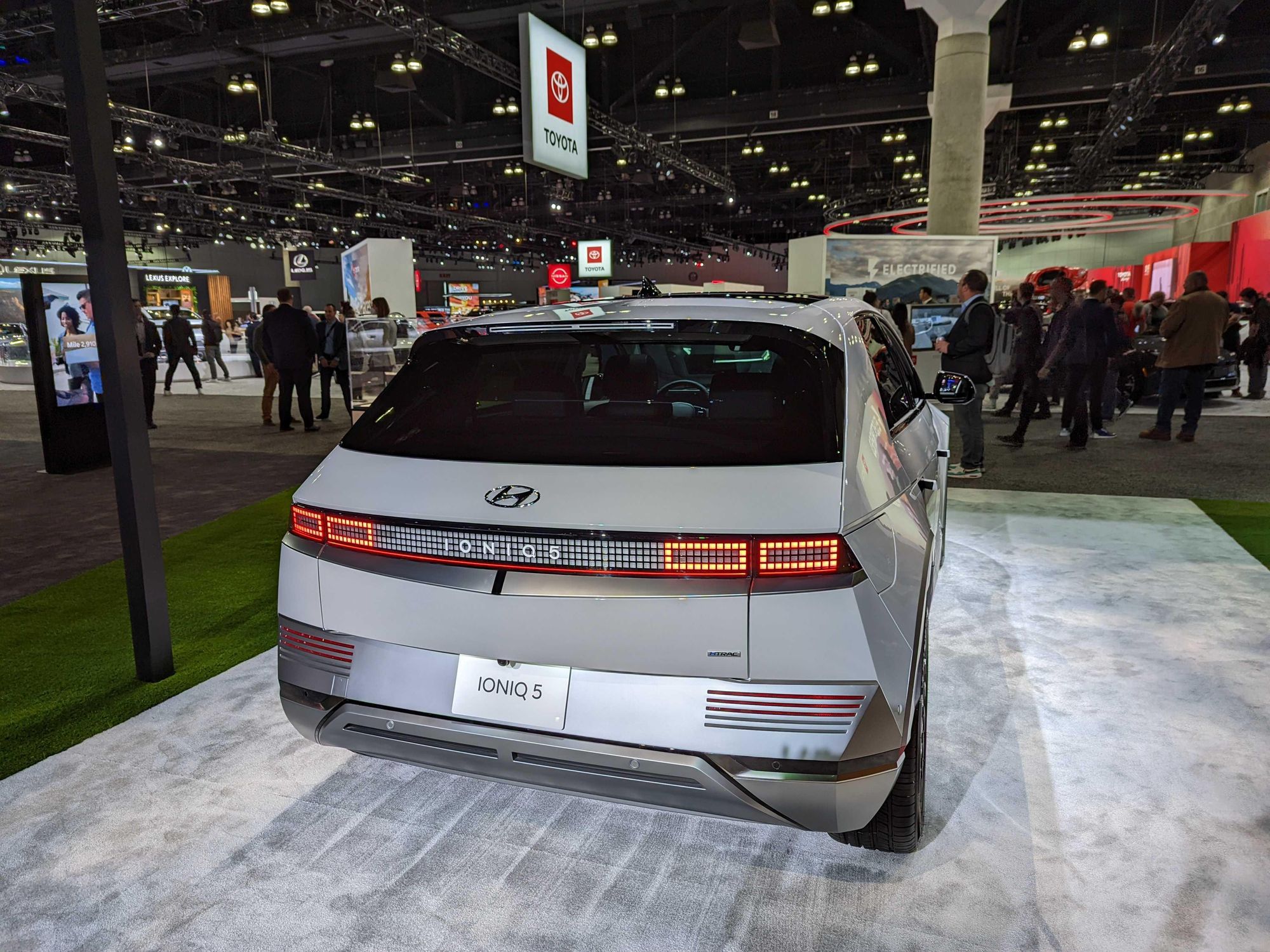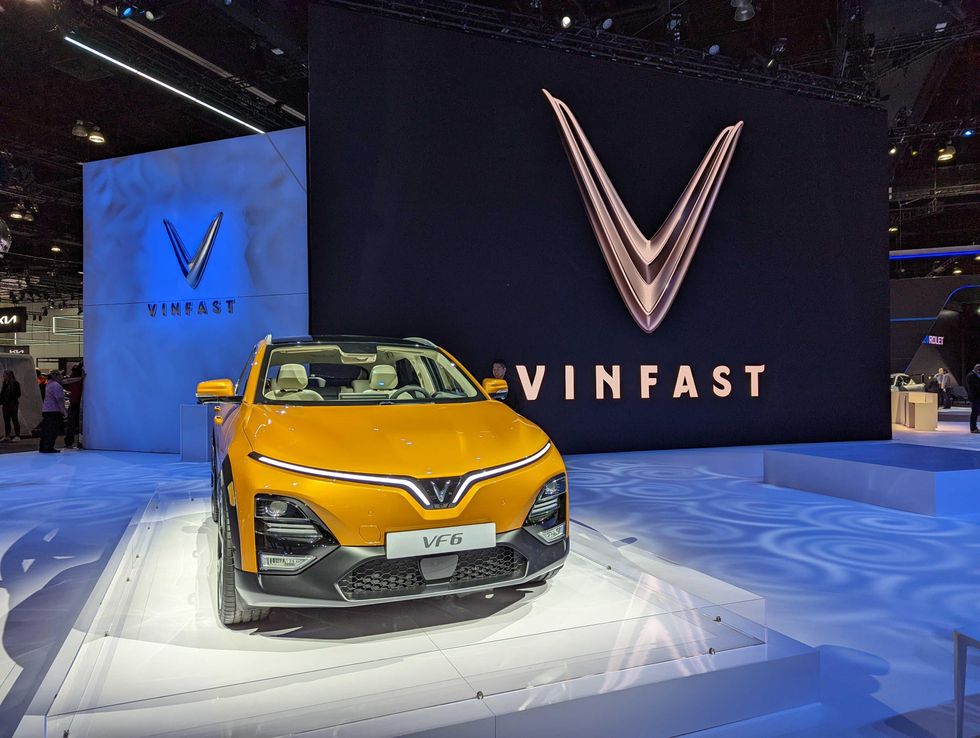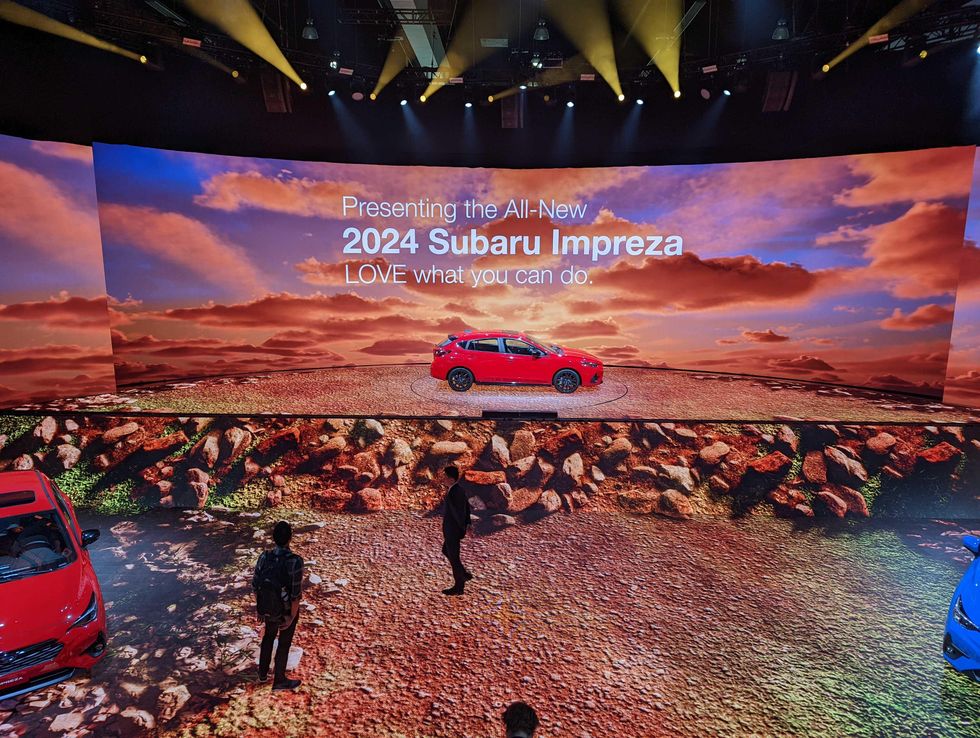The 2022 LA Auto Show Kicked Off This Week, but EVs Weren’t at the Forefront
David Shultz reports on clean technology and electric vehicles, among other industries, for dot.LA. His writing has appeared in The Atlantic, Outside, Nautilus and many other publications.

Every year, inside the sprawling Los Angeles Conventions Center, the world’s foremost automakers gather to map out the future of personal mobility as part of the LA Auto Show. Against the backdrop of the nation’s plans to electrify 50% of new car sales by 2030 and a state that has pushed for a ban on new gas car sales by 2035, one would think that EVs would be front and center at this year’s show. Instead, the event–at least so far–has revealed just how far most automakers still have to go.
Most manufacturers at the show had only one or two electric models in their line ups. Ford brought the F-150 Lightning and the Mustang Mach-E in various configurations. Porsche had two versions of the Taycan on display. A Lucid Air in a glass box greeted customers outside at registration. Kia brought the EV6 and the Niro EV. But all the brands also featured half a dozen gas-driven platforms as well. The exception to the trend was Chevy, which brought the Bolt EV, the Equinox EV, the Blazer EV, and the Silverado EV. Impressive, but an outlier.
That the majority of the vehicles at the LA Auto Show weren’t EVs isn’t particularly surprising. I didn’t expect the show to be entirely electric. but there’s something strange about watching Ford advertise the power or headroom in its F-150 Raptor, knowing that you won’t even be able to buy one in California in 12 years. (On a mostly unrelated note: It’s kind of nuts that we let people drive gasoline powered cars around inside a venue crammed with people. I’m sure the LA Convention Center has a great HVAC system and all, but being indoors with a bunch of cars is also quite the sensation.)

Twelve is an interesting number in car years, as it equates to the average lifespan of a vehicle, according to Progressive. That puts the automotive industry in the dawn of the final generation for internal combustion engine (ICE) vehicles. If electrification goes as planned, this is it. The last hurrah for gasoline. The whole vibe is very Mike Mulligan and His Steam Shovel.
Notably absent were many of SoCal’s major players in the EV industry. Rivian was not there. Mullen was not there. Faraday Future was not there. Fisker was not there despite the fact that the Ocean is scheduled to start shipping at the end of the month.
Vinfast–the Vietnamese EV company with a US headquarters in Los Angeles–was the most notable exception. Yesterday the company unveiled two new models for US production, the VF6 and the VF7. The VF6 is a subcompact SUV and the VF7 is a compact SUV. While we’ve known about the existence of these models for sometime, Vinfast’s decision to bring them to the United States starting in 2024 marked what turned out to be the biggest EV-related news of the conference so far. Which is especially wild considering the company hasn’t even begun selling its first two models, the VF8 and VF9. The company declined to give specifics on pricing and couldn’t confirm whether the cars will use the same controversial battery subscription plan as their big brothers, but the models should be less expensive.
Also present was IndiEV, a Los Angeles-based EV startup that’s put a heavy focus on putting gaming into its vehicle. Outside the main hall, in what’s referrred to as the West Atrium, their prototype vehicle which purportedly will start at $45,000, had two full sized monitors on the front dash, accompanied by a full keyboard, a mouse, an Xbox controller, and a VR headset.
During a tour of the car’s features, John Santos, a marketing associate at IndiEV, says the company is even working on building VR games that incorporate the G-force associated with driving into the player experience. Turning right or left might trigger in game events that make the experience even more immersive. If you get nauseous playing VR games while stationary, this might not sound appealing at all, but the comparison to how dream levels work in Nolan’s Inception, made this one of the most futuristic-feeling moments of the day. No details about when the car might enter production, however.

Japanese car manufacturer Subaru had probably the most elaborate display in the entire venue. Complete with fake jungle aesthetics, a tree fort, and a fenced off area full of real live puppies, the company was obviously leaning hard into its outdoor-centric brand image. Which was a bit awkward because it also brought zero EVs to the show. A graphic listing all its models on display did include the electric Solterra SUV, with a caption that simply read “coming soon.”
On the infrastructure end of things, many of the usual charging companies made appearances. Electrify America was there, and sponsored charging at the venue. SoCal’s own EVGo was set up in a booth where attendees could browse through all its charger locations using the PlugShare app, which they acquired in the summer of 2021. They also had two goats–like the living farm animals–in a makeshift pen next to the booth. The rationale behind this decision apparently stems from the simple fact that “EVGo” sounds like “EVGoat.” A bit of a reach, perhaps, but the goats proved extremely popular.
It’s curious to watch this massive industry on the cusp of such a radical transition. The show makes it clear who’s ahead on electrification and who isn’t. Hyundai and Kia are two of the most exciting EV automotive brands in America right now. The Ioniq 5 and 6, in particular, looked slick, and the price points won’t make you want to walk into the Pacific.
Nonetheless, the LA Auto Show made clear that despite a depleted tank, the internal combustion engine is still running on more than just fumes. How much more mileage the industry can squeeze out of fossil fuels remains to be seen. But in 2022, the ratio of EVs to ICEV still remains low.
- LA Has Become a Magnet for EV Charging Startups. Biden's Plan Could Supercharge Them. ›
- Electric Vehicle Startup Vinfast Targets 2023 for Public Offering ›
- Autonomy Purchases 2,500 Vinfast VF8 and VF9 Models - dot.LA ›
- Vinfast Ships First Electric Cars to U.S. Market - dot.LA ›
- Rivian's Roadmap Includes Price Bumps and Tech Pivots - dot.LA ›
David Shultz reports on clean technology and electric vehicles, among other industries, for dot.LA. His writing has appeared in The Atlantic, Outside, Nautilus and many other publications.




